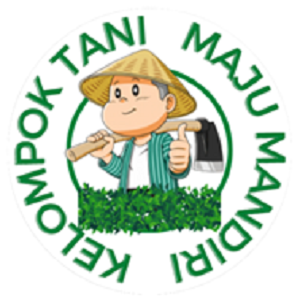Optimalisasi Keuntungan Usaha melalui Pelatihan Pembudidayaan Varietas Cabai Unggul yang Tahan Organisme Pengganggu Tanaman dan Pengelolaan Pasca Panen Optimizing Business Profits through Cultivation of Superior Chilli Varieties Resistant to Crop Pests and Post-Harvest Management
Main Article Content
Abstract
Growing vegetables is a support to the family economy for farmers. The living conditions of fellow farmers are still far from good. The purpose of the Community Science and Technology Application in empowering Independent Advanced Farmer Groups is to provide solutions to problems in the aspects of production, management, marketing, management and post-harvest management. Thus, it has an impact in increasing the empowerment of partners. The methodology used in the application of community science and technology is training and direct practice in the field. Pre-Community Service and post Community Service results, Farmers in this activity experience increased knowledge up to 90.34%. The highest increase in knowledge results lies in the knowledge achievement indicator related to Understanding Superior Variety Seeds, while the lowest percentage increase is in the knowledge achievement indicator Understanding Post-Harvest Processing, which is 78.67%. The average level of improvement in the achievement of knowledge indicators is 45.23% of the knowledge previously possessed. The conclusion of this community service is the improvement of partners from various aspects such as the understanding of seeds of superior varieties, knowledge of planting techniques, the ability to install agricultural tools, understanding of post-harvest processing, knowledge of digital promotion and the ability to prepare financial reports.
Downloads
Article Details

This work is licensed under a Creative Commons Attribution-ShareAlike 4.0 International License.
Authors who publish with this journal agree to the following terms:
- Any article on the copyright is retained by the author(s).
- Author grant the journal, right of first publication with the work simultaneously licensed under a Creative Commons Attribution License that allows others to share work with acknowledgment of the work authors and initial publications in this journal.
- Authors are able to enter into a separate, additional contractual arrangements for non-exclusive distribution of published articles of work (eg, post-institutional repository) or publish it in a book, with acknowledgment of its initial publication in this journal.
- Authors are permitted and encouraged to post their work online (e.g., in institutional repositories or on their websites) prior to and during the submission process, as can lead to productive exchanges, as well as earlier and greater citation of published work.
- The article and any associated published material is distributed under the Creative Commons Attribution-ShareAlike 4.0 International License
References
Abdurrahman, G., Oktavianto, H., Habibie, E. Y., & Hadiyatullah, A. W. (2020). Pelatihan Digital Marketing Pada UMKM Sebagai Penunjang Kegiatan Promosi Dan Pemasaran. Jurnal Pengabdian Masyarakat Manage, 1(2), 88–92. https://doi.org/10.32528/jpmm.v1i2.3981
Agustina, Y., Setianingsih, S., & Santoso, Y. D. (2019). Pelatihan Penyusunan Laporan Keuangan Bagi Entitas Mikro, Kecil, dan Menengah Bidang Usaha Dagang pada UMKM Binaan Pusat Inkubasi Bisnis Syariah Majelis Ulama Indonesia. Intervensi Komunitas : Jurnal Pengabdian Masyarakat, 1(1), 1-13.
Apriadi, D. & Saputra, A. Y. (2017). E-Commerce berbasis marketplace dalam upaya mempersingkat distribusi penjualan hasil Pertanian. Jurnal RESTI (Rekayasa Sistem dan Teknologi Informasi), 1(2), 131–136. https://doi.org/10.29207/resti.v1i2.36
Badan Pusat Statistik. (2022). Data Perkebunan Indonesia. https://www.bps.go.id/subject/54/perkebunan.html#subjekViewTab3
Fariroh, I., Novikarumsari, N. D., & Utami, R. A. (2021). Upaya Optimalisasi Lahan Pekarangan melalui Pelatihan Teknik Budidaya Cabai Rawit Terpadu dan Inisiasi Pembentukan KWT pada Kelompok Hidayah Tani di Jember, Jawa Timur. PengabdianMu: Jurnal Ilmiah Pengabdian Kepada Masyarakat, 6(4), 348–355. https://doi.org/10.33084/pengabdianmu.v6i4.1843
Febriantoko, J., Mayasari, R., & Sepindjung, B. (2019). Evaluasi Kegiatan Usaha Pertanian Bawang Merah Pada Kelompok Tani Tradisional di Kabupaten Banyuasin. Prosiding Seminar Nasional Hasil Litbangyasa Industri, 2(2), 158–164.
Febriantoko, J., Sepindjung, B., & Mayasari, R. (2020). Pendampingan dalam Perencanaan Penanaman Bawang Merah pada Kelompok Tani Harapan Jaya Kelurahan Talang Keramat Kecamatan Talang Kelapa Kabupaten Banyuasin. Engagement: Jurnal Pengabdian Kepada Masyarakat, 4(1), 31-41. https://doi.org/10.52166/engagement.v4i1.79
Kesumawati, N. & Hayati, R. (2016). Diversifikasi Produk Olahan Cabai Merah Keriting Sebagai Alternatif Penanganan Pasca Panen Cabai Merah Di Kecamatan Curup Utara Kabupaten Rejang Lebong. Dharma Raflesia: Jurnal Ilmiah Pengembangan dan Penerapan IPTEKS, 14(2), 167-176. https://doi.org/10.33369/dr.v14i2.2614
Manoppo, J. S. S., Sakul, E. H., & Karundeng, M. (2018). Penggunaan pupuk organik untuk meningkatkan hasil tanaman cabai kelompok tani di Kabupaten Minahasa. Jurnal Dedikasi, 20(1), 95–100. https://doi.org/10.26858/dedikasi.v20i1.7931
Nurhasanah, N. & Hamzah, A. H. P. (2022). Evaluasi Kegiatan Budidaya Tanaman Cabai Dipekarangan Menggunakan Pupuk Cair Ekstrak Bawang Merah Di Desa Iwul Kabupaten Bogor. Jurnal Tunas, 3(2), 220–227. http://dx.doi.org/10.30645/jtunas.v3i2.58
Nurwahyuningsi, N., Ahmadin, A., & Asmunandar, A. (2019). Modernisasi Alat Pertanian di Cikoro Gowa 2005-2015. Pattingalloang : Jurnal Pemikiran Pendidikan dan Penelitian Kesejarahan, 6(1), 81–90. https://doi.org/10.26858/pattingalloang.v6i1.10686
Saleh, L. (2018). Tinjauan Ekonomi Islam Terhadap Kelayakan Usaha Cabai Merah (Studi Kasus Di Desa Duriasi Kabupaten Konawe). Li Falah : Jurnal Studi Ekonomi dan Bisnis Islam, 3(2), 75-91. http://dx.doi.org/10.31332/lifalah.v3i2.1198
Satriya, I. W. B. & Purnamasari, N. K. G. (2021). Pelatihan Dan Pendampingan Pengolahan Cabai Rawit Menjadi Bubuk Cabai Siap Konsumsi Di Kelompok Tani Pangan Sejahtera Sarwa Prani Kelurahan Penatih Denpasar Timur. Jurnal Sewaka Bhakti, 7(2), 10–18.
Syukur, M., Sobir, Maharijaya, A., Aisyah, S. I., Sukma, D., Sulassih, et al. (2018) Potensi keunggulan tanaman cabai Lembayung IPB sebagai varietas baru pada tanaman hias. Comm. Horticulturae Journal, 2(2), 54–61. http://dx.doi.org/10.29244/chj.2.2.54-61
Triana, D., Syamsinar, & Ishak, A. A. A. (2020). Pemberdayaan Warga Karang Taruna Kelurahan Tamarunang Melalui Pengolahan Cabai Di Kabupaten Gowa. Jurnal Dinamika Pengabdian, 5(2), 238–248. https://doi.org/10.20956/jdp.v5i2.10141
Wulandari, T. N., Saridewi, T. R., & Dayat. (2020). Peningkatan Kapasitas Petani Dalam Pengendalian Organisme Pengganggu Tanaman Pada Budidaya Cabai Merah Di Kecamatan Tugumulyo Kabupaten Musi Rawas. Jurnal Inovasi Penelitian, 1(3), 647-658. https://doi.org/10.47492/jip.v1i3.114
Vebriansyah, R. (2018). Tingkatkan produktivitas cabai. Jakarta: Penebar Swadaya Grup.
